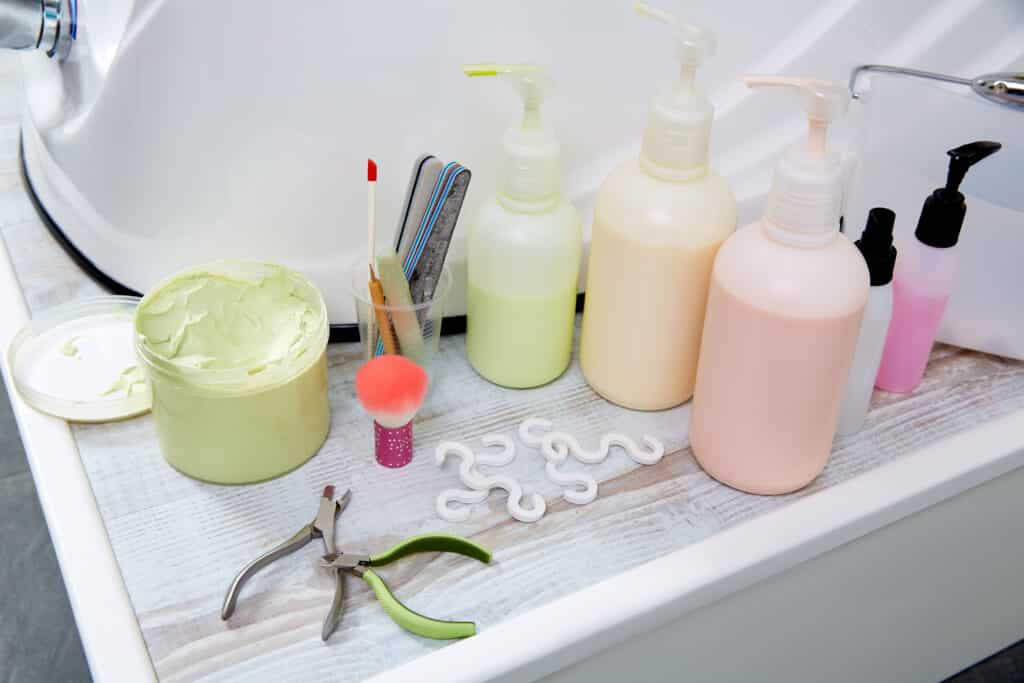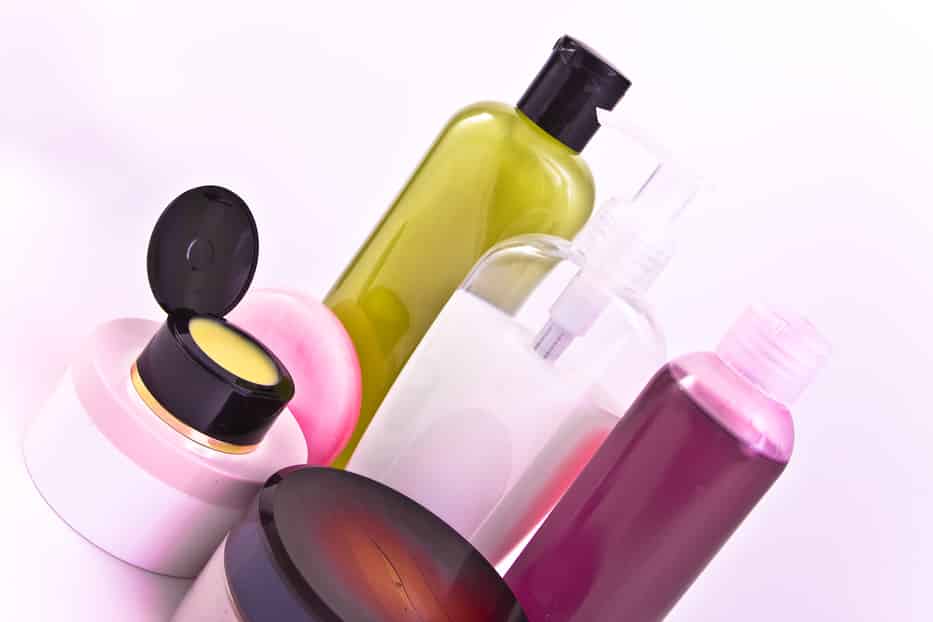Our heels endure a lot every day.
From carrying our weight to absorbing stress and protecting your bones and joints, our feet are under more pressure than any body part.
It’s no surprise that thick heel cracks (or fissures) are one of the most common foot issues.
According to the National Foot Health Assessment, 20% of adults have experienced cracked skin on their feet.
Cracks aren’t just unsightly, either.
Deep cracks can become infected with bacteria.

Redness, pain, and swelling are just a few of the symptoms of inflammation.
Recurrent heel cracks can also be the sign of a more serious medical issue like diabetes or a vitamin deficiency.
In this guide, we’ll tell you everything you need to know about heel cracks – causes, remedies, prevention, and much more!
What Causes Cracked Heels?
You have your entire body weight pressing on your heels every day.
Your skin thickens to endure the pressure and protect you from bacteria.
Unfortunately, this also makes heel skin more prone to cracking.
But, heel cracks could also be the consequence of an underlying condition. Here are the most common causes of heel cracks:
Vitamin Deficiencies
Vitamins are essential for your overall health. Skin conditions like heel cracks can appear if you’re not getting enough of these key nutrients:1Silke K. Schagen, Vasiliki A. Zampeli, Evgenia Makrantonaki, and Christos C. Zouboulis Discovering the link between nutrition and skin aging, Dermatoendocrinology. 2012

- Vitamin E protects skin collagen from premature aging, while a deficiency can cause dryness and cracks.
- Vitamin C works together with vitamin E to keep your collagen healthy. Vitamin C deficiency (known as scurvy) can cause dry, scaly skin, as well as bleeding and wounds that are harder to heal.
- Vitamin B3, also known as niacin, is essential for active metabolism, and it also fights free radicals. If you’re not getting enough niacin, you might develop pellagra, which (among other symptoms) leads to skin cracks. These usually appear in sun-exposed areas, so you’re not likely to notice them on your heels first.
Diabetes
In untreated diabetes, your blood sugar levels become dangerously high.
High blood glucose causes an array of complications, among them damage to peripheral nerves and blood vessels.

People with diabetes experience foot problems because the nerve damage makes it hard to notice irritation or pain.
This increases the chance of cracks, sores, and blisters, which can become inflamed.
If you have diabetes, keeping your blood sugar under control and taking good care of your feet is a must to avoid wounds and infections.2Jenna Fletcher How can diabetes affect the feet? Medical News Today. 2019
Incorrectly Fit Shoes
Poorly fitting footwear can put additional pressure on your skin, causing it to thicken and crack.

Open-sole shoes can make things even worse!
For example, flip-flops are notorious for making your heels crack.
Increased Pressure on the Heels
The longer you stand, the more pressure your heels have to handle.
Excess weight can push down on your feet even more.

This can displace the regular fat pad, causing it to expand sideways.
If your skin isn’t supple and flexible, this can lead to thickening and fissures.
Heel Spurs
A heel spur is a bony-like growth that appears when calcium builds up in the heel bone.

Common heel spur symptoms include pain, inflammation, and swelling.
Heel spurs also increase the pressure on your feet, causing the skin to thicken and crack.
Psoriasis
Raised red patches (plaques) covered by a layer of dead skin cells is the most common symptom of psoriasis.3Katie E Benjegerdes, Kimberly Hyde, Dario Kivelevitch, and Bobbak Mansouri Pustular psoriasis: pathophysiology and current treatment perspectives Psoriasis: Targets and Therapy. 2016

The plaques usually appear on your elbows and knees, but they could also affect other parts of your body, including your feet.
Palmoplantar pustulosis is a severe form of psoriasis that affects the hands and feet.
Foot soaks, exfoliation, as well as topical ointments, can soothe your skin and reduce the inflammation.
Eczema
Eczema is a skin condition the causes dryness, flaking, and itchy skin.
Dyshidrotic eczema is a common form of the disease, where itchy blisters appear on your hands and feet.

The blisters can break, become inflamed, and lead to severe conditions like sepsis.
If you suspect you might have eczema, consult with a dermatologist to come up with a management plan.
Fungal Infections
Athlete’s foot is a fungal infection that causes dry and itchy skin.
In more severe cases, cracks and blisters might appear.
Fungus thrives in humid areas – whether that’s a locker room, shower, or your feet after a long jog.
Remember to wear comfortable, breathable socks and avoid walking barefoot in damp areas to prevent athlete’s foot.4Muhannad Al Hasan, S Matthew Fitzgerald, Mahnaz Saoudian, and Guha Krishnaswamy Dermatology for the practicing allergist: Tinea pedis and its complications Clinical and Molecular Allergy. 2004
Hypothyroidism
Thyroid problems can affect your skin, causing it to become thin, brittle, and scaly.
They also affect sweat glands, drying your skin even more.
An underactive thyroid is relatively common, especially in women (due to autoimmune conditions.)
If you’re experiencing persistent skin problems, thyroid hormones might be something for your doctor to examine.5Joshua D Safer Thyroid hormone action on skin Dermatoendocrinology. 2011
How To Treat Cracked Heels
Treating heel cracks is about more than looks.

Deep heel cracks can become inflamed, painful, and even start bleeding.
Here are the best ways to banish heel cracks once and for all:
Electric Callus Remover
Electric callus removers use a mineral stone to buff away dead skin gently.
Unlike foot graters and other sharp tools, they don’t damage healthy tissue.

Use the electric callus remover right out of the shower or after a foot soak.
The warm water will help loosen dead skin cells, making them easier to remove.
Editor’s Choice: Own Harmony Rechargeable Electric Callus Remover
Priced at just $30, this is our favorite callus remover.
The fast-rotating stone helps you tackle hard-to-reach places and thick skin deposits with minimal effort.
With a built-in battery and compact, ergonomic design, this is also the best remover to take on vacation – it barely takes any space but gets the job done impressively well.
Pumice Stone
Pumice is a soft stone that sloughs away dead cells with minimal damage to the skin underneath.
It’s an inexpensive natural alternative to files and graters.

But, you still have to be careful with pumice stones. To safely exfoliate your skin:
- Soak your feet in warm water (or use a foot soak).
- Wet the pumice to make sure it glides over your skin, without scraping too deep.
- Pat dry your feet and start rubbing.
- After a few minutes of light rubbing, rinse your skin and pumice.
Avoid using dry pumice stones or scrubbing too vigorously.
Foot Soaks
Soaking your feet in some warm water already softens the skin.
It’s a must before you exfoliate – whether you’re using a callus remover or a pumice stone.

But, some homemade remedies can make your foot soak even more useful:
-
- Adding a cup of Listerine to your foot soak can make your skin smoother, prevent infections, and even provide pain relief if your heels hurt.6 Debra Rose Wilson, Ph.D. Does soaking the feet in Listerine work?
, Medical News Today. 2017 - Vinegar is highly acidic, which helps break down bulk dry skin. Start with two parts water, one part vinegar soak and follow up with a callus remover or a pumice stone.7Shashi Gupta and Rabinarayan Acharya. Management of Padadari (cracked feet) with Rakta Snuhi (Euphorbia caducifolia Haines.) based formulation: An open-labeled clinical study
, Ayu. 2018
- Adding a cup of Listerine to your foot soak can make your skin smoother, prevent infections, and even provide pain relief if your heels hurt.6 Debra Rose Wilson, Ph.D. Does soaking the feet in Listerine work?
- Epsom salt is a gentle exfoliant, and it can prevent infections and foot odor. Use it in combination with your favorite essential oil for additional aromatherapy benefits.
Foot Masks and Peels
You have a skincare routine, why not a footcare routine?
Foot peels can help you deal with cracked heels by exfoliating away the dead skin.

And, once you get rid of the excess bulk, use a soothing foot mask to hydrate and pamper your feet.
Not only will this help you treat the problem, but it will also prevent heel cracks in the future.
How To Prevent Cracked Heels
Prevent heel fissures altogether by taking care of your feet, and looking after your general health, and you can wave goodbye to cracked skin once and for all.
Here are the best tips to avoid heel cracks:
Choose the Right Footwear
Avoid open-toe or open-sole shoes, especially for everyday use.

If you frequently get blisters, calluses, and cracked heels, consider talking to a podiatrist.
They can help you choose shoes that fit the curvature of your feet to prevent problems in the future.
Wear Padded Socks
Padded socks provide additional cushioning and support for your feet.

Use Foot Cream or Lotion
Choose a rich foot cream and apply it regularly. After you come out of the shower, moisturize and throw on some socks.

This practice will nourish your skin, keeping it smooth and crack-free.
Maintain Healthy Weight and Blood Sugar
Excess body weight presses down on your heels, deforming the natural fat pad, and increasing the stress on your skin.

Work with a professional to keep your weight and blood sugar within a healthy range to prevent complications.
Cracked Heel Remedies: Final Thoughts
Heel cracks can be treated.
Give your feet some TLC by indulging in a foot soak and exfoliating after.

Use the Own Harmony electric callus remover to make sure you’re not irritating the healthy skin underneath.
Then, follow up with a nourishing lotion or cream.
To prevent heel cracks altogether, moisturize regularly, wear comfortable shoes, and keep your body weight and blood sugar in a healthy range.
What is your best tip for dealing with cracked heels? Let us know in the comments below.
